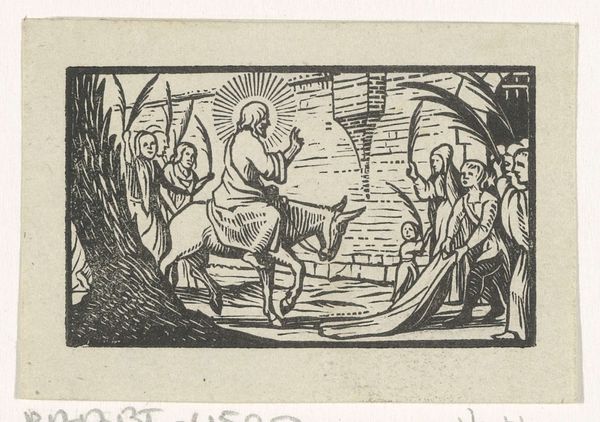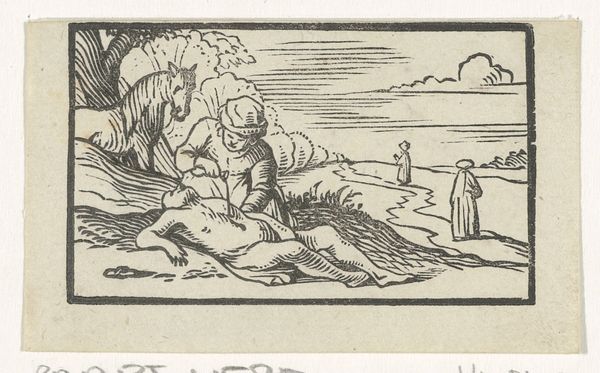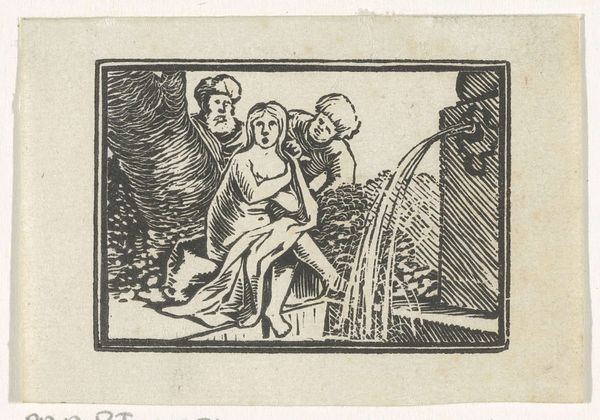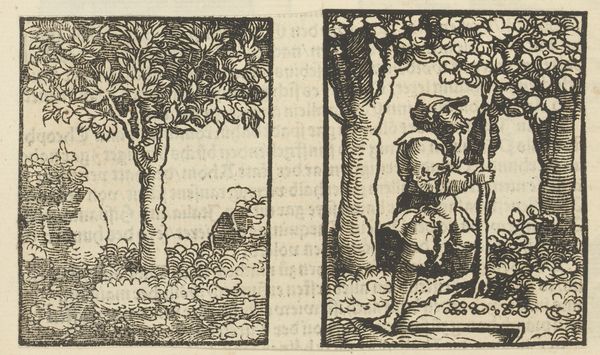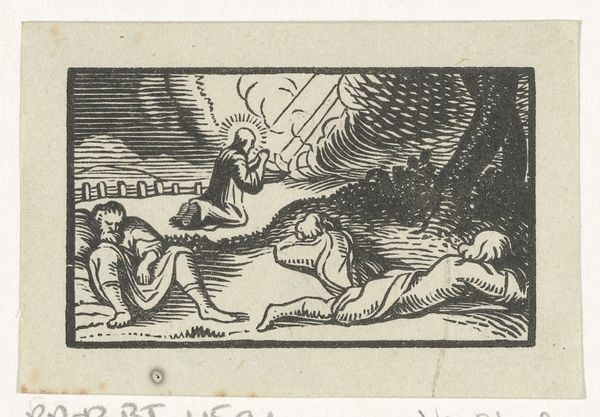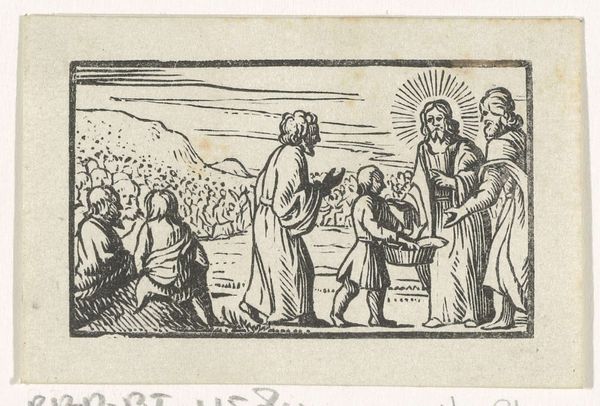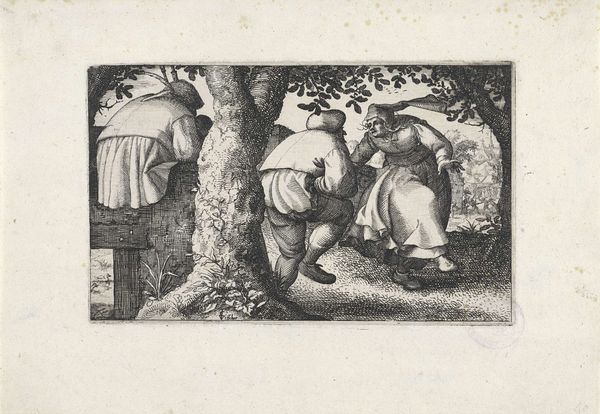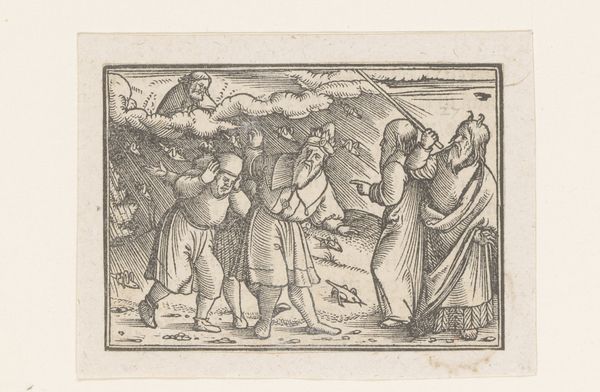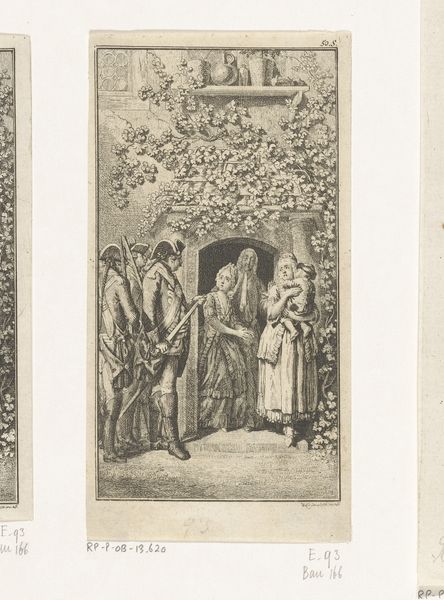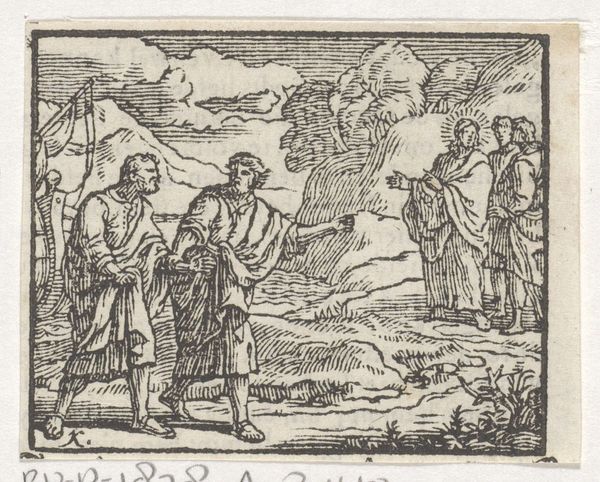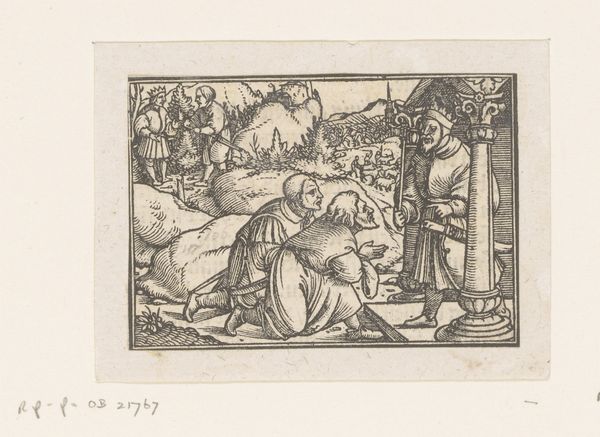
drawing, print, ink, woodcut, engraving
#
drawing
#
baroque
# print
#
pen sketch
#
landscape
#
figuration
#
ink
#
woodcut
#
engraving
Dimensions: height 44 mm, width 64 mm
Copyright: Rijks Museum: Open Domain
Curator: Hello! Editor: This woodcut print, "Emmaüsgangers," dating back to between 1635 and 1694 and attributed to Dirck de Bray, presents a rather stark scene in black and white. There's a definite story being told here, almost theatrical. How do you interpret this work within its historical and social context? Curator: I'm immediately drawn to the depiction of pilgrimage, visually coded through walking and religious symbolism. How does this resonate within the context of 17th-century Holland? A time marked by religious and political reformation, independence from Spanish rule, and debates on tolerance. The Emmaus story – where Christ appears to disciples after his resurrection – gains potency when viewed through the lens of a society grappling with new freedoms, and the place of the sacred within it. Who are the figures represented here, and who has the power? What happens to the men, followers or not, in that period? Editor: It’s fascinating to consider how a biblical scene interacts with these tensions of power and reformation in Dutch society! The figure in the center, radiating light, obviously represents Jesus. So how much artistic freedom do you think Dirck de Bray had during this period to depict the Emmaus scene while navigating cultural norms and power structures? Curator: Exactly. The use of light in itself is interesting and might suggest freedom but also risk in the religious debate and representation of god. It also opens up important discussions regarding how artistic and religious expressions contribute to larger narratives concerning freedom, faith, and self-determination within Baroque society. How can art offer new forms of understanding these histories? Editor: Thank you, that contextual understanding really enriches the experience of seeing this seemingly simple woodcut. I learned so much today! Curator: Agreed, situating this print in its era provides so many potential conversations about Dutch culture and religion during its time.
Comments
No comments
Be the first to comment and join the conversation on the ultimate creative platform.
